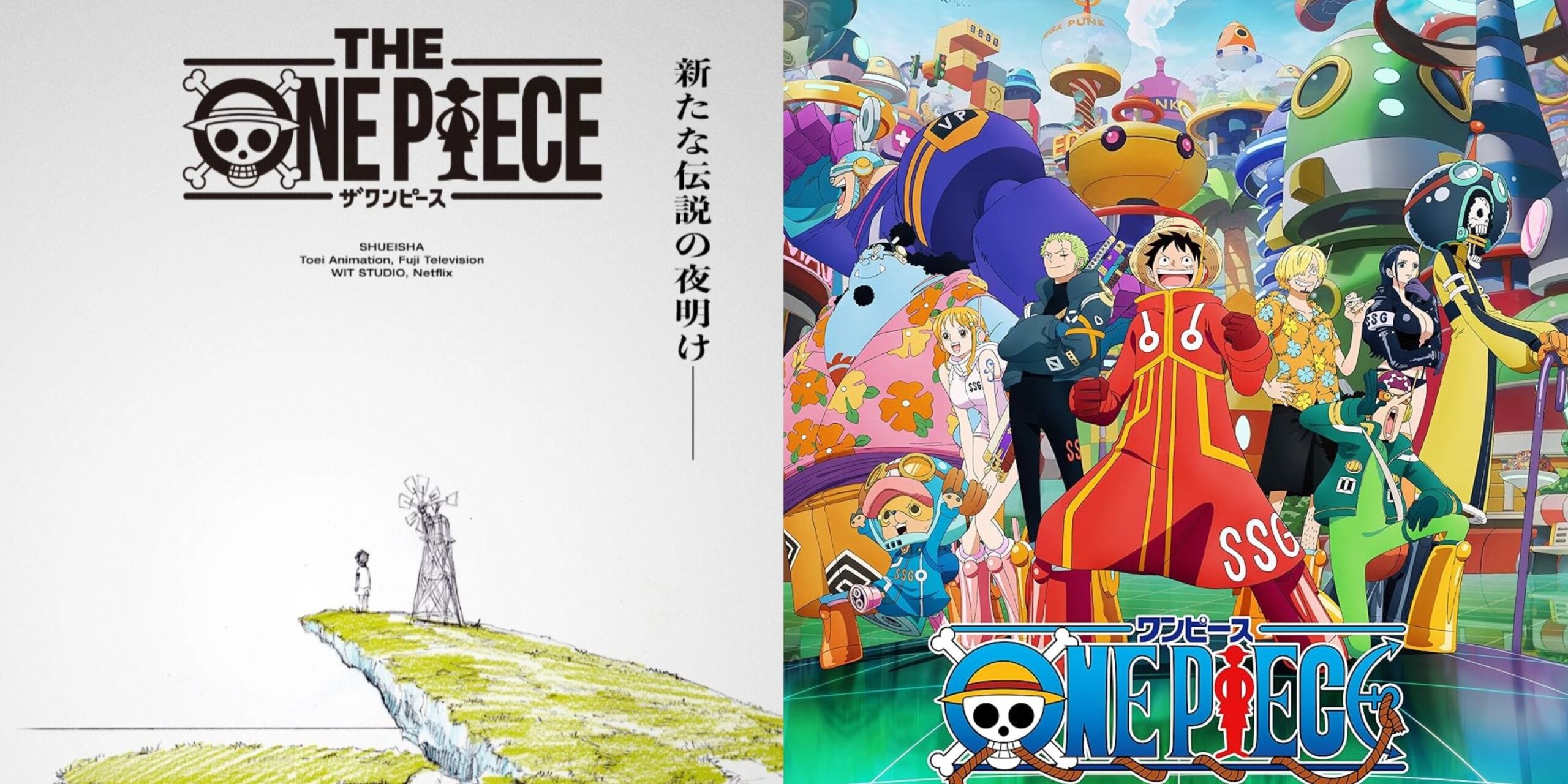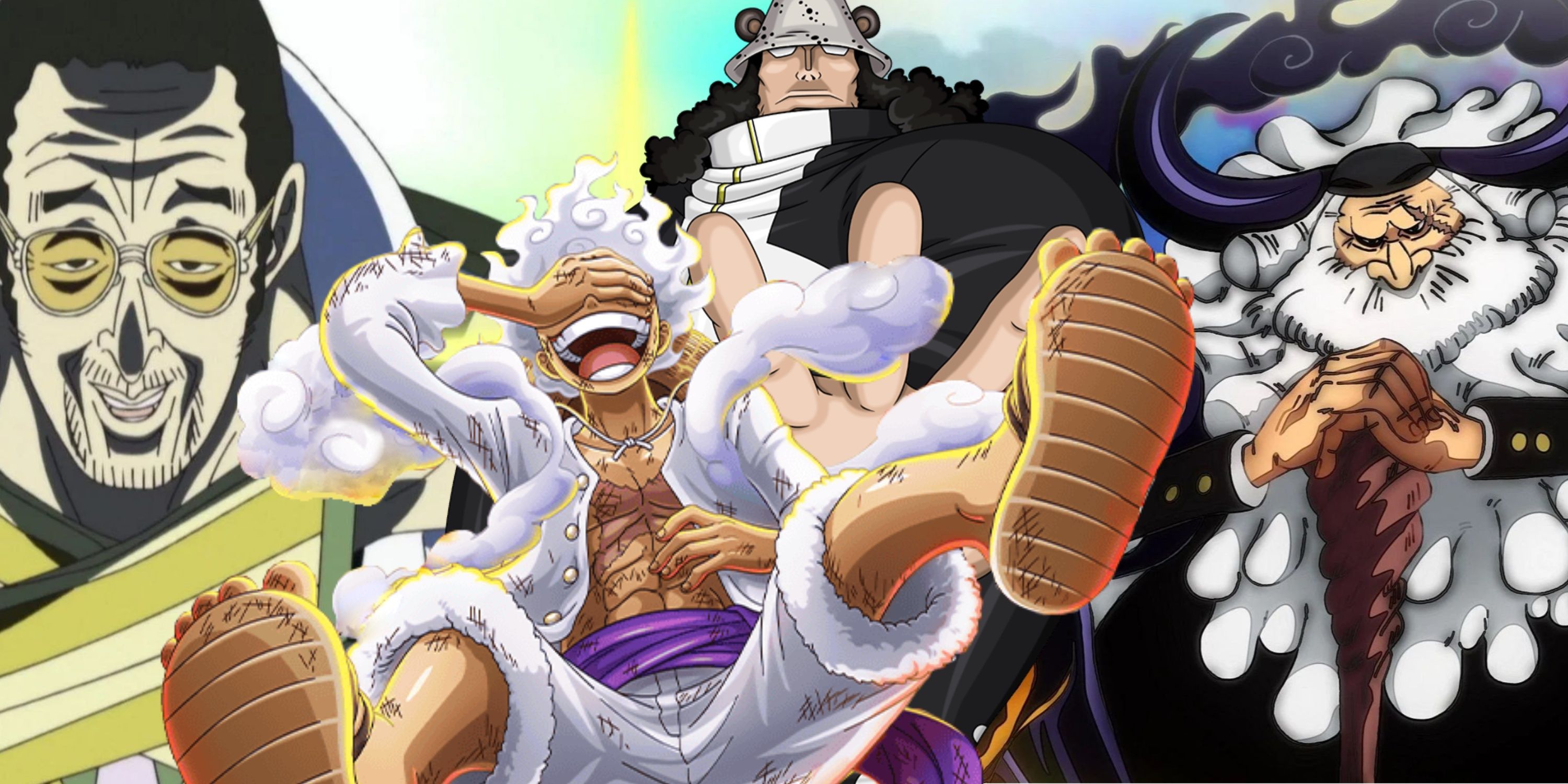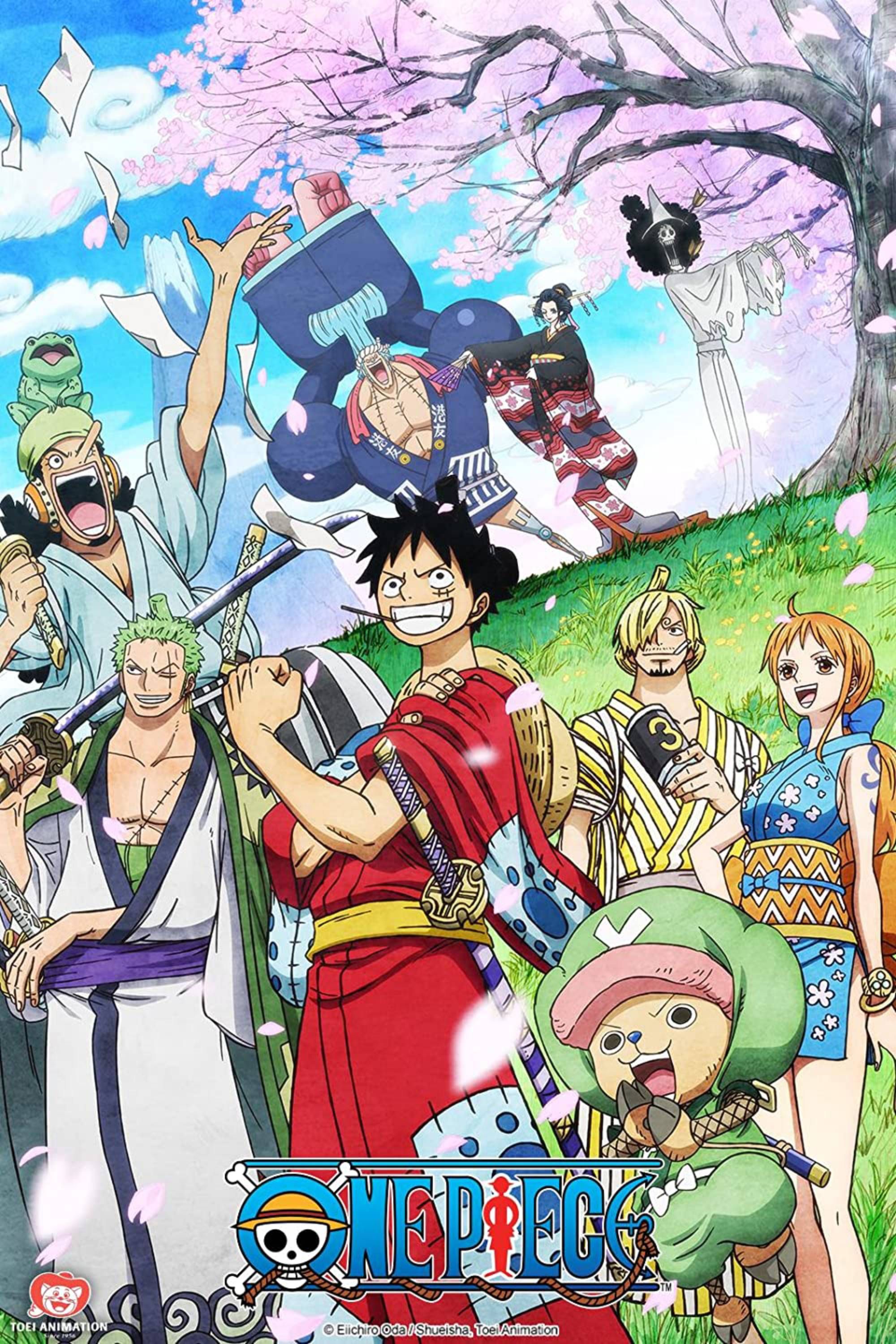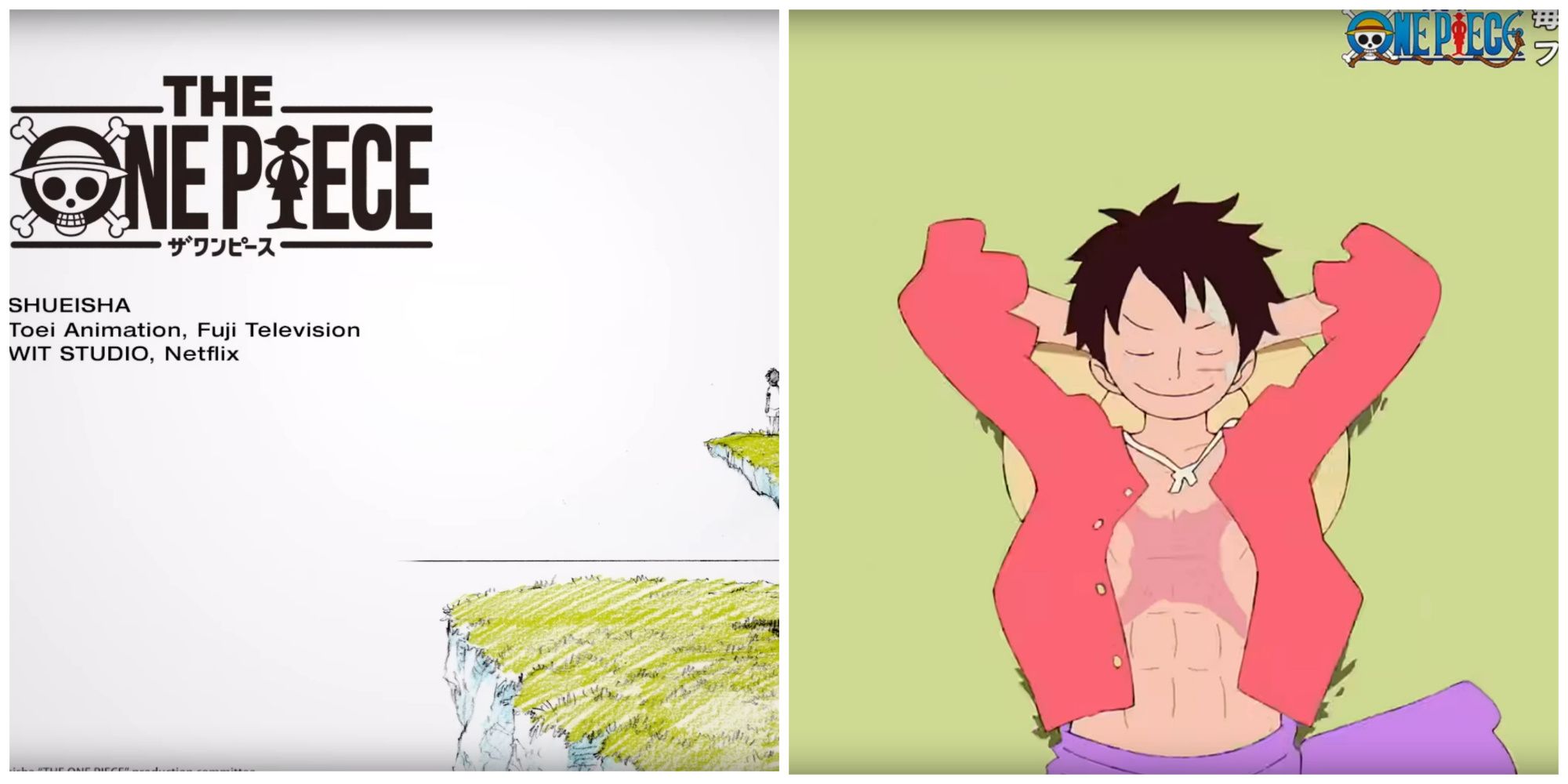
Highlights
- The original One Piece anime had a decline in pacing post-time skip, with one chapter or less covered in a single episode. WIT Studio’s adaptation could maintain an engaging pace without worrying about catching up to the manga.
- The challenges in creating a faster-paced One Piece anime lie in condensing the episode count while still effectively adapting the dense content of Eiichiro Oda’s manga. Background world-building, dialogue, and fight sequences contribute to the overall run time.
- WIT Studio’s adaptation of The One Piece could adopt a seasonal release schedule, which would take more than 10-15 years to adapt everything until the current Egghead Arc. Consistency with yearly seasonal releases is essential for maintaining relevance to the original anime and manga.
Ardent fans of Eiichiro Oda’s One Piece will generally cite the series’ length as indicative of its epic scale and immaculate world building, but this very well-known feature of the story has often been an issue for new entrants. With over 1100 chapters in the manga and almost as many anime episodes, there is a clear contradiction in the pacing of the series’ on-screen adaptation, but this may finally be resolved with WIT Studio’s planned remake titled The One Piece.
When first announced at Jump Festa 2024, there were many unanswered questions surrounding this fresh take on One Piece, since the original anime is now in its third decade of airing. Naturally, there was a lot of speculation about its release schedule, art style, music, voice cast, faithfulness to the manga, and the impact of Netflix’s involvement in the production process. That being said, there was no question more pertinent than that of its expected length and pacing, especially since Toei Animation’s One Piece anime has received a fair amount of criticism in these departments.
One Piece: What Does Egghead’s New Art Style Mean For The Anime?
Toei Animation’s adaptation has been plagued with issues for a long time, but the new aesthetic of the series could usher in some necessary changes.
The Pace Of Toei Animation’s Adaptation
Since the manga had a two-year head start on the anime when it premiered in 1999, the pacing of the East Blue Saga, which kicked off the series, was quite reasonable even by contemporary standards. Running for 61 episodes that cover the first 100 chapters of the manga, the pacing of the East Blue Saga is relatively acceptable for an anime adaptation.
Following this, the Arabasta Saga also had decent pacing, save for the inclusion of a few filler episodes, covering 117 chapters in 74 episodes. At this rate, the anime was covering around 1.5 to 2 chapters per episode on average, which is on par with or marginally slower in comparison to how most weekly manga series are adapted even today.
However, the subsequent Sky Island Saga featured more filler arcs than earlier sagas, which eventually also impacted its pacing, since it translated 85 chapters of content into 71 episodes, or 52 episodes excluding filler. This trend continued into the Water 7 Saga, where 139 chapters were converted into 110 episodes, with 9 filler episodes sprinkled throughout the saga. Eventually, the Thriller Bark and Summit War Sagas had almost the same number of chapters as episodes, with the latter saga even slightly exceeding the length of its manga source material.
A Serious Decline In Pacing Post-Time Skip
While the issues here were not as prominent as they would become after the time skip, the general decline in pacing was growing apparent, with one chapter or even less than that covered in a single episode. After the time skip, nearly every saga has an equivalent number of anime episodes and manga chapters, with some, such as the Dressrosa Saga and Wano Country Saga in the anime, far exceeding their length in the manga.
Even though there is less explicit filler content in the anime, Toei Animation’s adaptation has incorporated ways to extend each episode’s run time. This includes lengthy recap sections, repeated animation sequences, as well as an excessive number of still frames and reaction shots. While the Wano Country Saga and the ongoing Egghead Arc have shown marked improvements in art style and animation quality, the same cannot be said about their pacing.
How Will WIT Studio Pace Its Adaptation?
Undoubtedly, the greatest issue faced by the original anime was how closely it trailed behind its manga counterpart. Seldom ever more than 50-100 chapters apart, Toei Animation’s One Piece anime has used every trick in the book to avoid catching up to the manga source material, which has exerted a perceivable impact on the quality and pacing of the series.
Moreover, the anime has been airing weekly with few breaks for almost 25 years now, and the gap between it and the manga has steadily declined, to a point where it now has just over 40 chapters of content till it reaches the point where the manga currently is. Fortunately, WIT Studio does not have to worry about any of these concerns, and hence, it could easily maintain an engaging pace without having to worry about catching up.

One Piece: Will Egghead Be A Decisive Victory For The Straw Hats?
Since the odds have now tipped in their favor, is this a chance for Luffy and his crew to show the World Government what they are made of?
In fact, if WIT Studio’s The One Piece does end up adopting a seasonal release schedule as opposed to Toei Animation’s year-round production process, the anime could take more than 10-15 years to adapt everything until the current Egghead Arc from the manga. In this vein, there is a lot of content to adapt, but the remake will have to be consistent with yearly seasonal releases. This will be essential in maintaining its relevance with respect to the original anime and manga, which may both reach their conclusion within a few years, given that they are both currently covering the Final Saga.
The Challenges In Creating A Faster Paced One Piece Anime
Ideally, The One Piece could proceed at a similar pace as the original anime for the East Blue Saga and Arabasta Saga, which would come up to around 1.5-2 chapters adapted per episode. This would condense the episode count of the series to approximately 600-640 episodes for the 1100+ manga chapters that have been released till date. While it may still be quite long, this is a marked improvement over the 1090+ episodes which have aired, covering 1063 chapters so far.
Although most weekly manga series generally have 2-3 chapters adapted per anime episode, this might be a bit difficult in One Piece’s case, due to how each of Eiichiro Oda’s pages is crammed with information ranging from character interactions, fights, and background world building elements, to the copious amounts of dialogue that panels are laden with. This is also something Toei Animation’s adaptation has been forced to contend with over the years, as the sheer amount of content contained within a 15-20 page chapter of One Piecefar exceeds those of its manga peers.
Even though it is essentially a battle shonen/ adventure manga, One Piece does require a lot of focus to read, as minor scraps of information can have major ramifications in the overall plot further down the line. Additionally, if WIT Studio chooses to flesh out fight sequences as it has done with its past anime adaptations such asAttack on Titan, it will also contribute to the overall run time, even if viewers may not have too many complaints about it. Whatever the case may be, WIT Studio and Netflix definitely have their work cut out for them, but looking at past anime remakes such as Fullmetal Alchemist: Brotherhood or Hellsing Ultimate, they may stand to gain a lot from going ahead with this ambitious project.
One Piece is available to stream on Netflix.

One Piece
- Release Date
- October 20, 1999
- Creator
- Eiichiro Oda
- Studio
- Toei Animation
- Number of Episodes
- 1082+

One Piece: 5 Things The Remake Should Keep From The Ongoing Anime
Regardless of the story changes Netflix wants to make, There are fundamental components of One Piece that should be maintained in the upcoming Remake.